
Alexander Heinle
Alex is a marketer at Zavvy. On this blog, he mainly shares insights gained from discussions with selected experts and from helping our customers set up and improve their onboarding or learning programs.

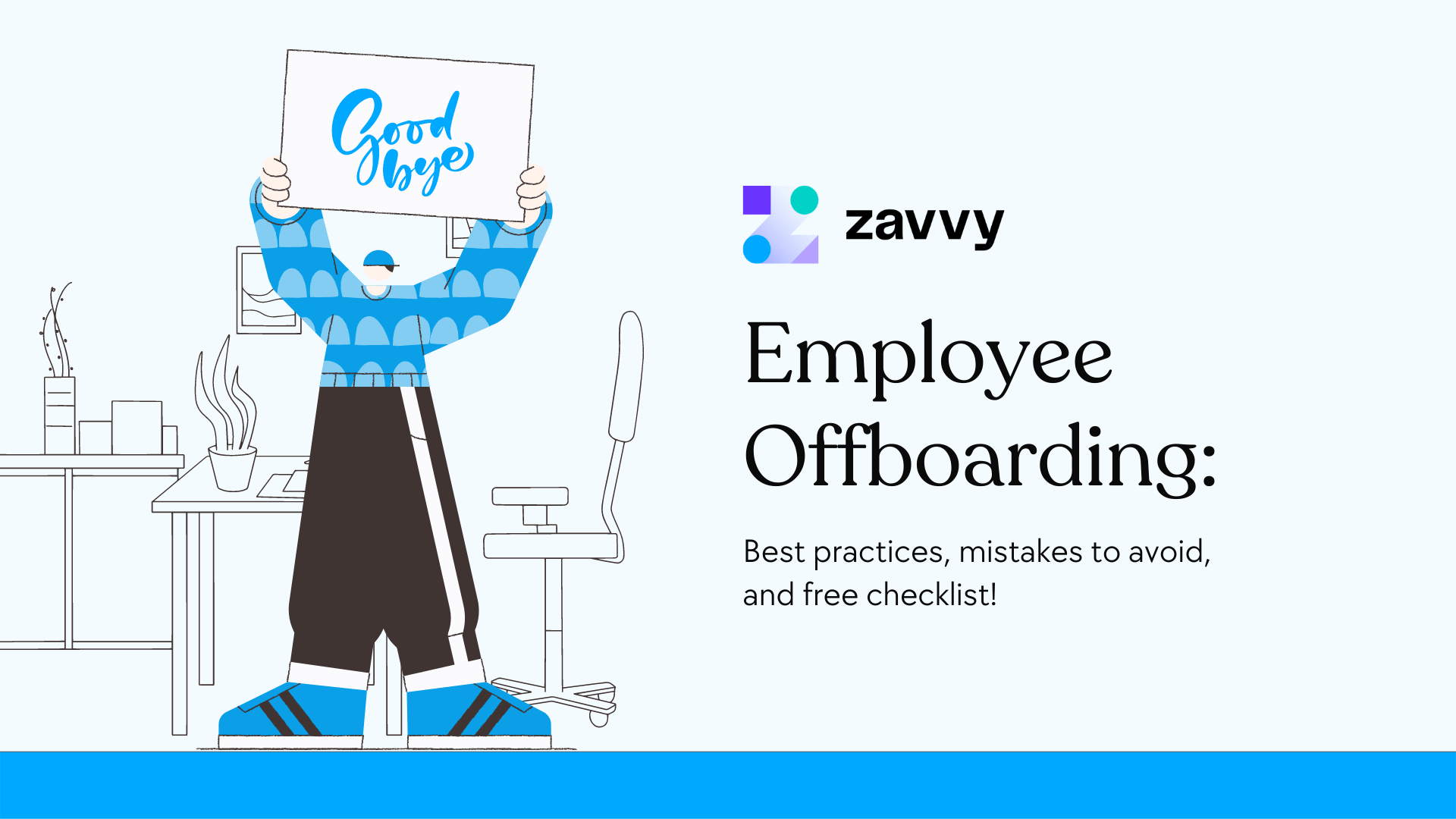
Organizations gloat about their positive culture and cushy perks to attract new talents. But what happens when an employee decides to resign? Do they show the same level of dedication to off-boarding them?
While onboarding and offboarding are cut from the same cloth, little thought goes into the latter. As many as 75% of companies do not understand the value of an employee offboarding process.
Most offer a perfunctory exit interview and call it a day. But it takes a lot more than that. So it's about time organizations rethink their offboarding.
Here's why - and how.
Together with our curators, we have created a library of actionable digital marketing resources. Personalized to your team's needs.
Employee offboarding is the formal separation between an employer and an employee. This involves steps like an exit interview, handing off assignments, describing post-employment benefits, and more.
Typically, an employee who has worked at your company for at least 6 months requires an offboarding process. There could be several reasons behind this, like resignation, retirement, internal transfer, termination, or layoff.
Onboarding and offboarding are two sides of the same coin. And the differences between the two goes beyond 'you're hired' and 'you're fired' phrases. So let's take a look at some key differences and similarities:
In the end, you want to feel assured that your efforts result in higher motivation while they're still working for you. And higher referral rates after that. However, offboarding can be a sensitive period for the employee, especially if they're terminated.
You need to handle this process with honesty and ensure your employee can get the much-needed closure.
Typical offboarding is a whirlwind of project wrap-ups, paperwork, and exit interviews in many organizations.
"The manager might ask the person who's leaving to write a [report] to share his knowledge, but often there's just not enough time for that,"
- John Sullivan, professor of management at San Francisco State University, HR expert
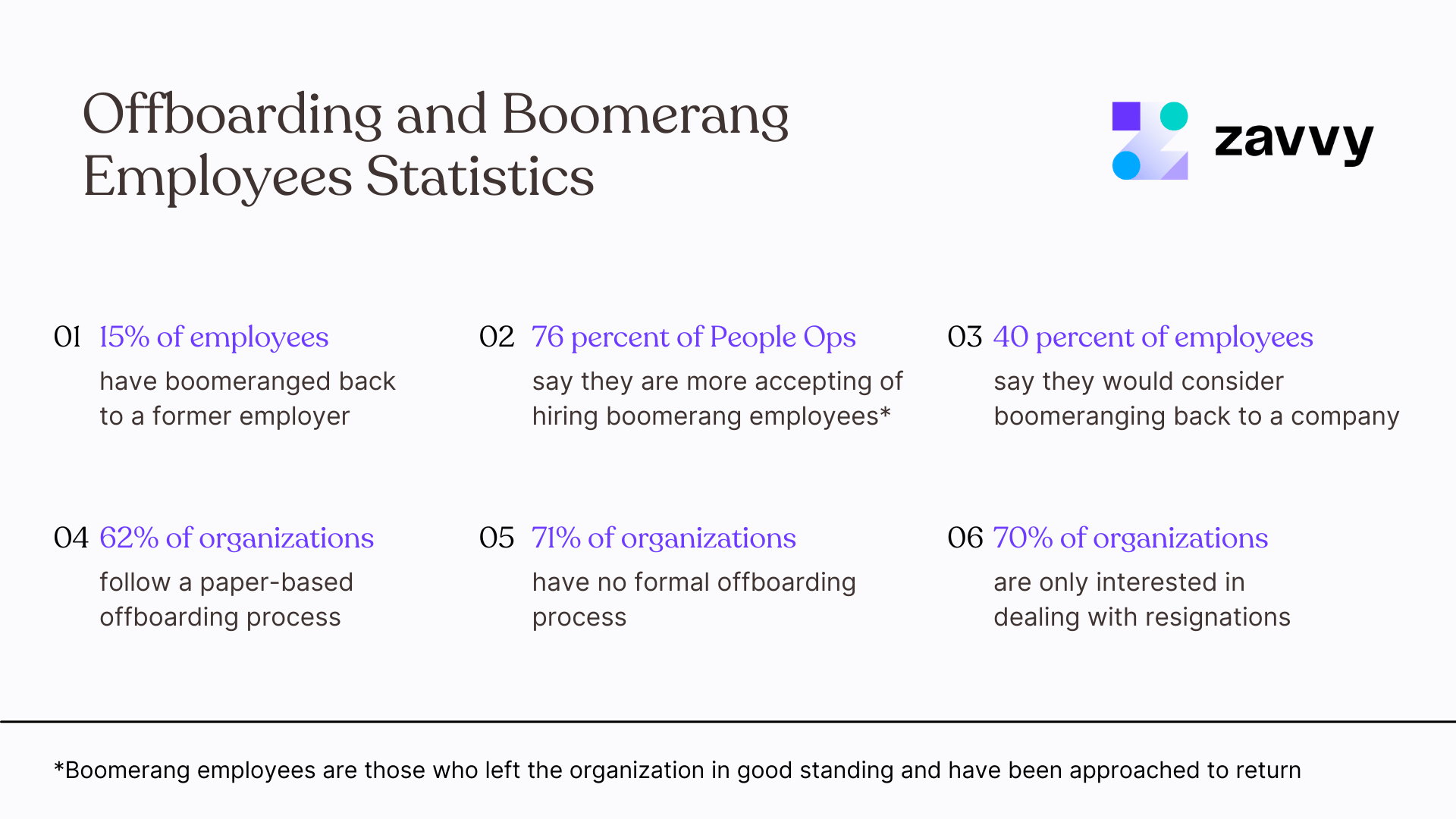
We hear it all the time: employees are your organization's greatest asset. Not just when they're working for you, but even after they leave your organization. Think of them as your brand ambassadors. You'd want them to positively speak about your company, their overall experience, and how you offboard them.
Employees today aren't afraid to speak their minds. Platforms like Glassdoor, LinkedIn, and social media channels have allowed employees to review their ex-organizations. Making it more important than ever to depart in good standing.
A bitter experience results in negative PR for your company and difficulties attracting new talent. According to HBR, leading companies prepare for offboarding long before an employee's exit. They approach it in a strategic, data-driven, and flexible way.
Just like onboarding, employee offboarding is an integral part of talent management, as it helps create long-term value for your company.
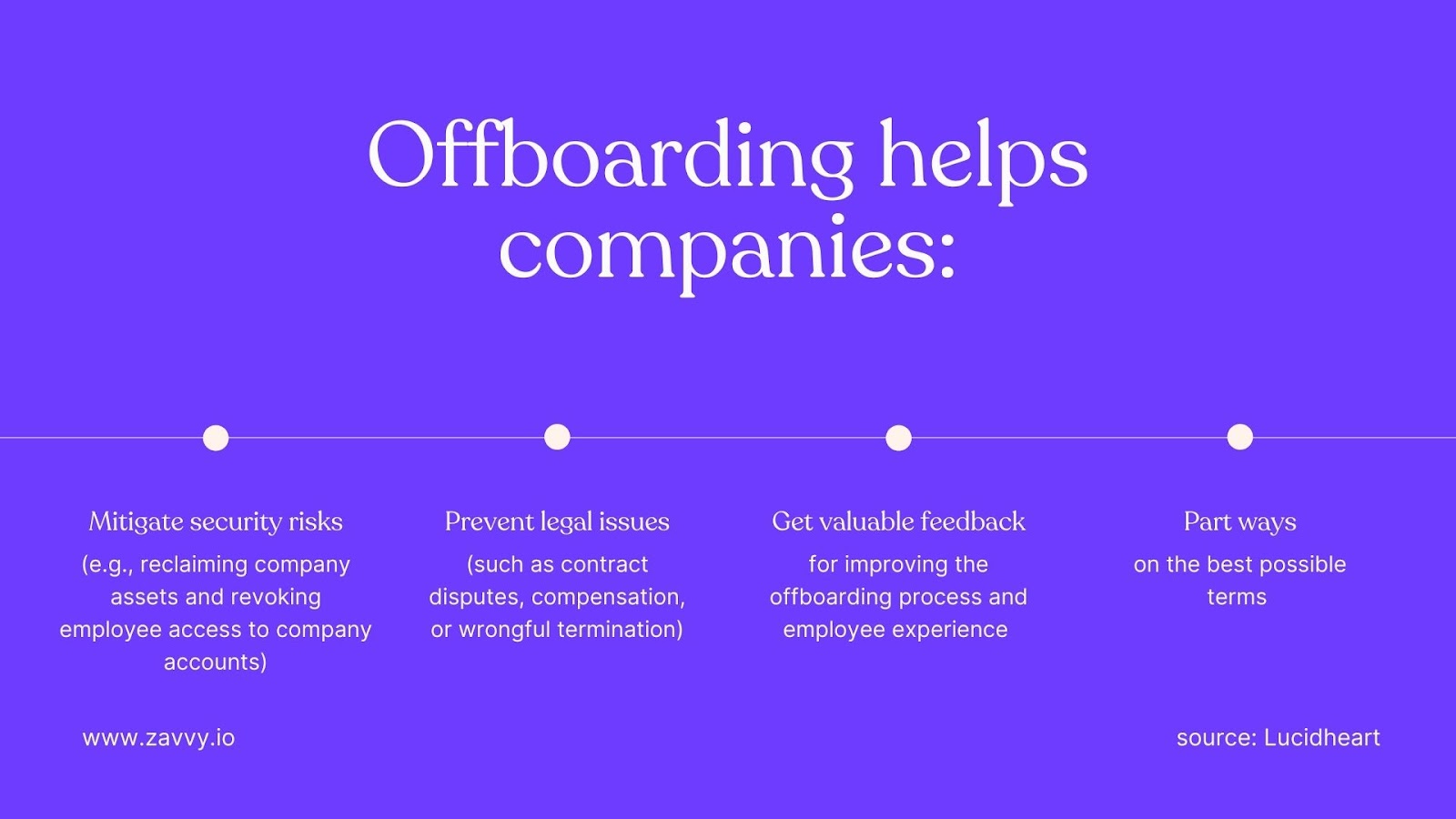
Saying goodbye to your employee is almost inevitable. But it doesn't have to be hard. Here are some best offboarding practices to follow–they may vary depending on the scale and nature of your organization. However, you can still use this as a guide to begin with.
Ideally, People Operations take over the responsibility of initiating this process. This includes:
People who know they're about to leave anyway will usually answer more honestly. So use that chance for some deep feedback!
This step is dedicated to filing all the paperwork, reviewing the contract, and taking time to prepare the benefits/tax documents.
This process comprises 3 core steps:
Oversee the transition in a way that helps you retain your departing employee's expertise. Encourage them to share the knowledge about their role, and transfer it to the responsible employee.
Ensure a smooth transition between the departing employee and the replacement. This could include handing over information like account login id, password, files, documents, briefing about the clients, and more.
Carry out this step during your employee's last week at your organization. Connect with the IT/logistics team to collect the office information equipment like:
Tip: To avoid any awkward situations prevent employees from using their personal cell phone numbers for business calls. You might not want offboarded employees staying in contact with your customers.
This is the final stage, and it's officially your employee's last day at work.
Time to organize an intimate farewell party. Depending on your employee's position, you can invite the whole organization or only their team members.
Additionally, you can give a:
A typical offboarding process demands the following people to get involved:
So what does holistic offboarding look like? The best ones are pre-planned, organized, inclusive, and based on your company's core values. Here's an overview of what to include in your offboarding checklist:
However, this is just a glimpse of what goes into your checklist. Here's an extensive version that guarantees a smooth offboarding.
Download it for free to get started!
Companies strive to create a positive first impression. But the journey of retaining your talent doesn't end there. It continues till their offboarding program. Sometimes, companies ignore the value of your departing employee. As a result, they mistreat them, often leave them out of the process, or even fail to offboard them.
Offboarding programs need to be humane and align with your organization's values. To ensure this, here are some common mistakes to avoid:
There are times when managers exclude employees from project meetings during their notice period. For example, People Ops stop inviting the departing employee to corporate events.
But, it is so essential to maintain relationships with your employees even during their offboarding process. Because, at some point, these people will be the source of information about your organization.
Always involve your employee in every step, engage with them, ask about their requirements and how you can facilitate a smooth transition.
You may never know when your departing employee could bring a new opportunity/investment to your organization. However, things like accusing people of being disloyal, refusing to appreciate their efforts, and departing on bitter terms leave a considerable impact on your other employee's impression of your organization.
Our tip: Let the employee know that no matter when, your organization's door is always open, should they decide to work for you again.
"When people leave, they are going to talk about the company and the way they were treated on the way out,"
- Mike Quinn, senior vice president for integration at Synthomer
The way management treats the departing employee speaks volumes about your organization's standards. Unfortunately, they're often targeted with negativity and disrespect. Things like badmouthing your employees with their peers and failing to acknowledge their presence push employees to vent their frustration on social media platforms.
Leaving an organization can be overwhelming–especially for employees who have spent a large part of their career there. The last thing you'd want to do is burden them with work that requires 'urgent' attention.
Piling on additional work creates a negative experience, and your employee departs with a bitter memory. It's best to delegate this work to their peers until you find a replacement.
Saying goodbye to your employee can be emotional. Even if they've worked for only 6 months or weren't high-performing, don't point out faults during their moment of departure. Writing a letter of recommendation or a LinkedIn review, draft a positive review, and depart with kind words.
An exit interview is a confrontation between managers/people ops and the employee. Depending on your relationship, this is your chance to resolve any conflicts, offer gratitude, and share honest feedback.
An exit interview could also offer much-needed closure. However, rushing through this process or avoiding it can make it difficult for both you and the employee to end on a good note.
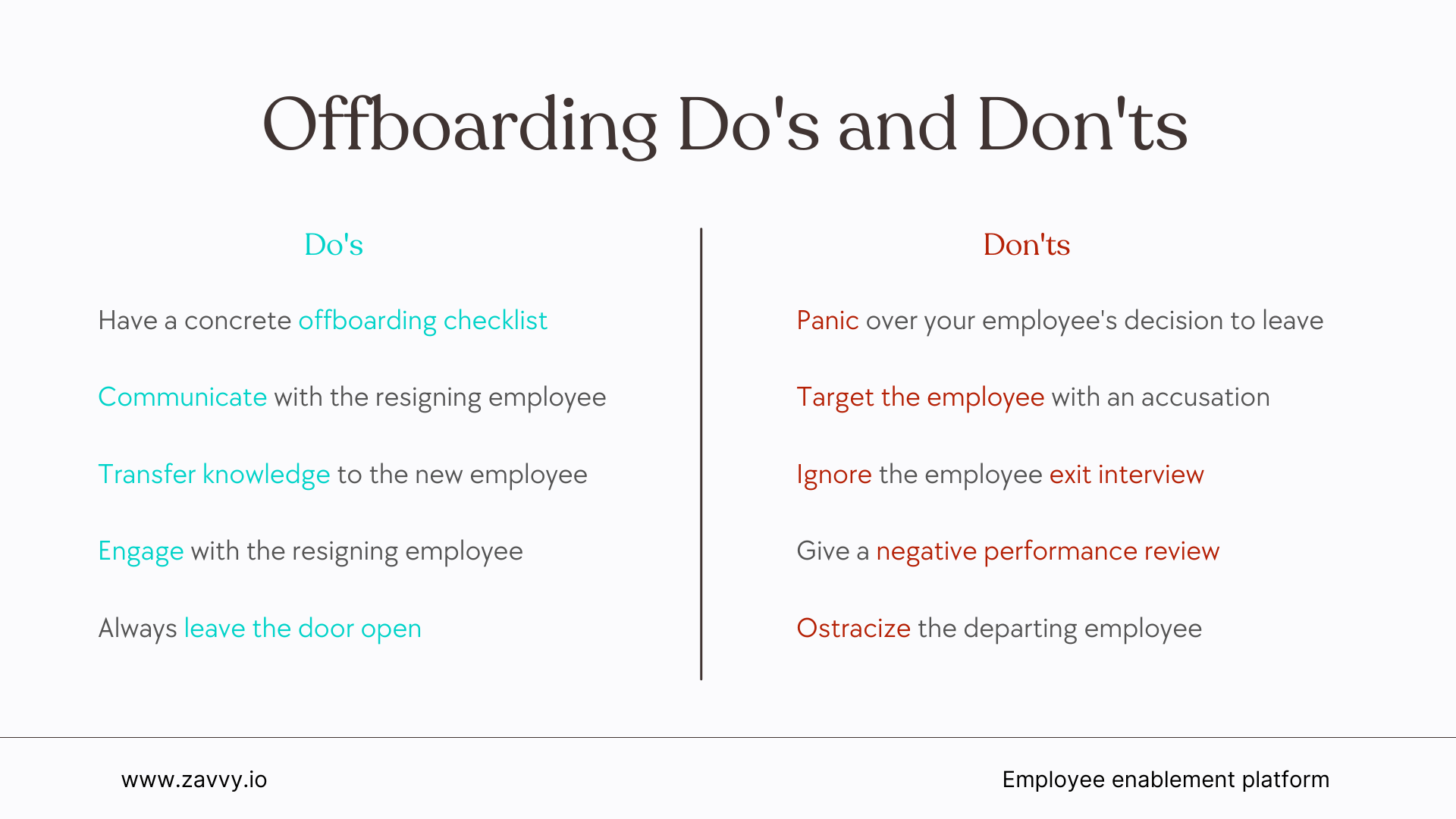
Quite recently, the CEO of better.com fired 900 employees within 5 minutes over a video call. A mass layoff like this one was unempathetic and received a lot of backlash on social media.
Within hours, platforms like LinkedIn, Facebook, and Glassdoor were flooded with negative comments from FinTech's employees. Existing and previous employees came out to openly share the organization's toxic work culture and practices. As a result, several more top executives decided to quit, and Vishal Garg, the CEO, was placed on leave.
This situation brought a lot of issues into the limelight:
This is a classic case study that proves the importance of proper offboarding. And why companies need to make it an essential part of their employee experience initiatives.
At Zavvy, we enable top companies to deliver the best employee experience. This starts with preboarding and continues along the whole employee life cycle - all the way until offboarding. Our platform offers People Ops to create customized templates (onboarding, meetup rituals, performance reviews, and more) that take employees through a guided journey.
Not only does it foster engagement, but it also helps build a positive employer brand value.
Here's an exemplary offboarding Journey you can create on Zavvy:
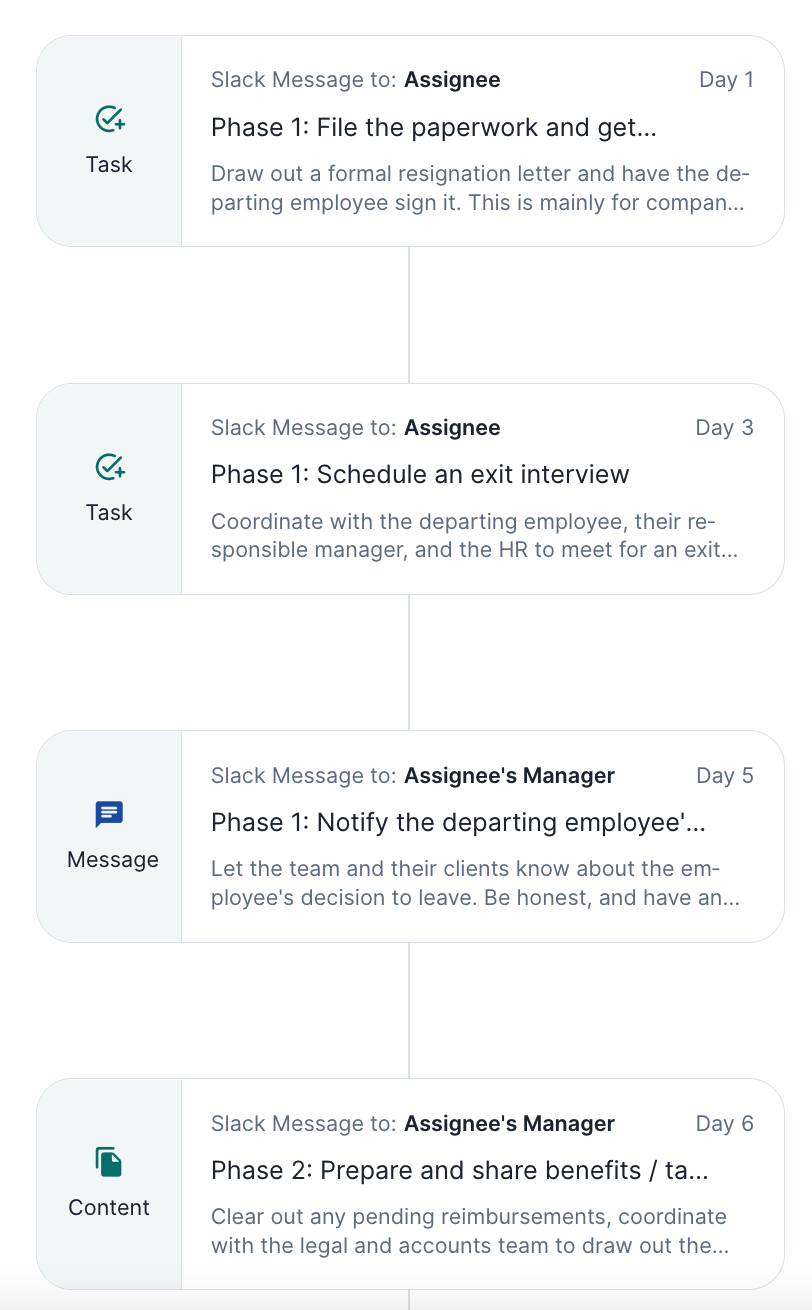
Why it's so helpful:
If you're unsure where to start from, our experts are happy to help! Connect with us anytime or book a free demo.
The level of commitment a company invests in its offboarding largely depends on its scale, budget, culture, and retention rate. Irrespective of this, what matters is that you have a basic offboarding plan/process and ensure all legal obligations are met.
Companies need to be aware that even their highest-paid talents are willing to leave for another organization. One that offers a better employee experience. This starts from employee onboarding to initiating developmental programs and goes all the way until employee offboarding.
Talk to our experts on how Zavvy can boost your organization's engagement and retention rates through our solutions!
Upskill your team every week with the best contents and personalized recommendations.

Organizations gloat about their positive culture and cushy perks to attract new talents. But what happens when an employee decides to resign? Do they show the same level of dedication to off-boarding them?
While onboarding and offboarding are cut from the same cloth, little thought goes into the latter. As many as 75% of companies do not understand the value of an employee offboarding process.
Most offer a perfunctory exit interview and call it a day. But it takes a lot more than that. So it's about time organizations rethink their offboarding.
Here's why - and how.
Get a demo!
We'll be happy to show you around and answer all your questions.
Trusted by innovative companies



We'll be happy to show you around, answer your questions, or arrange a free trial.
Erhalten Sie eine kostenlose Demo unserer Onboarding-Software.
Vertraut von



Your Training & Development Strategy - Solved in 1 Tool.
Trusted by innovative companies



We'll be happy to show you around, answer your questions, or arrange a free trial.
Learn how Zavvy helps you drive performance, development, and engagement.
Trusted by innovative companies



We'll be happy to show you around, answer your questions, or arrange a free trial.
We'll be happy to show you around and answer all your questions.
Trusted by innovative companies



We'll be happy to show you around, answer your questions, or arrange a free trial.
Gerne zeigen wir Ihnen ganz unverbindlich unsere Plattform im Detail.
Vertraut von modernen Unternehmen



Get a demo!
We'll be happy to show you around and answer all your questions.
Trusted by innovative companies



We'll be happy to show you around, answer your questions, or arrange a free trial.
Erhalten Sie eine kostenlose Demo unserer Software für Mitarbeiterenwicklung und Training.
Moderne Unternehmen
setzen auf Zavvy


